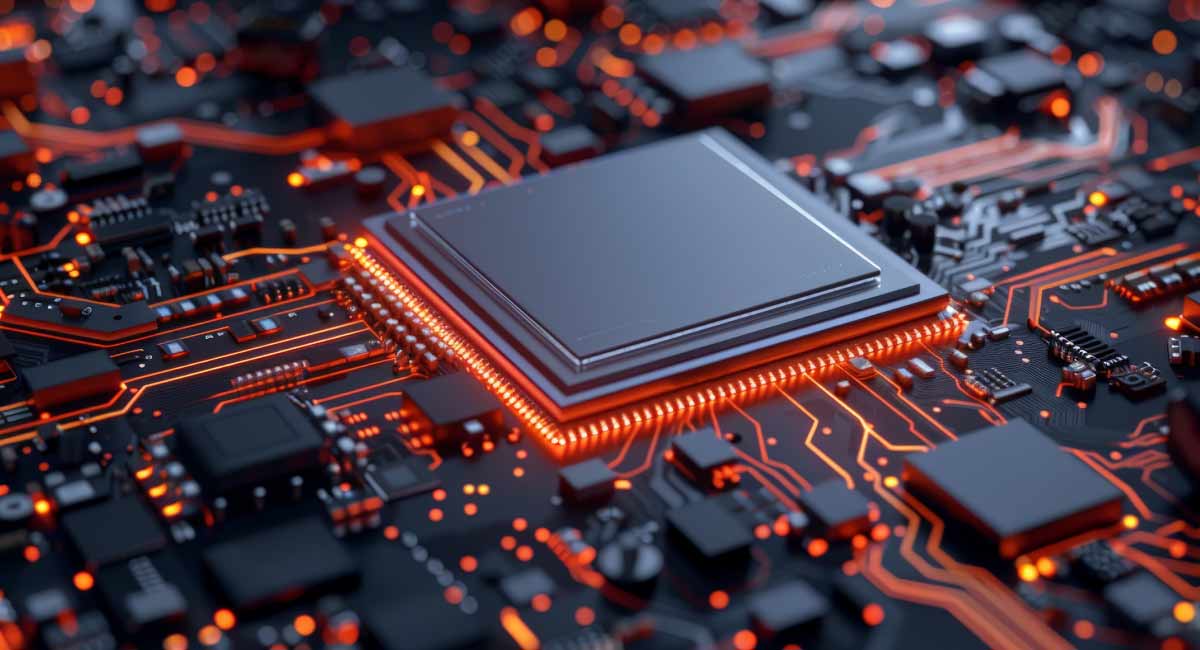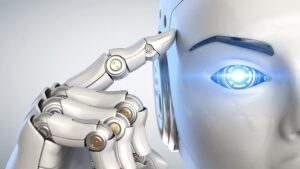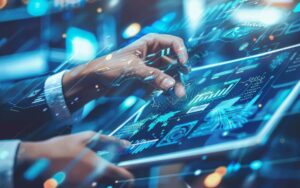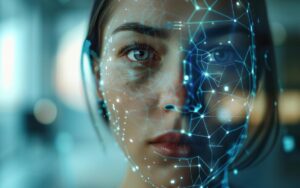Nowadays, every single appliance, such as smart watches, robotic mops, air conditioners, and lights, is digitally controlled. Each piece of equipment uses AI to run programs to obtain results, such as calculating the number of calories from the step walked in a smartwatch or controlling the air conditioner at specific temperatures for a particular time. This AI is called edge AI because it uses AI near the edge of the source, namely, the device, and processes data locally to provide outputs.
As the number of devices coming under the purview of Edge AI rises, there is a massive demand for experts in AI and ML concepts and applications. This article will explore what edge AI is, its advantages, its working, and its use cases. Further, we will discuss a future-ready online AI ML program that will equip you with the necessary skills to tackle the implementation of Edge AI head-on with creative solutions.
Understanding Edge AI
Edge artificial intelligence (Edge AI) is a technology that uses AI models and algorithms in local edge devices like the Internet of Things (IoT) and sensors. The deployment of Edge AI helps process and analyze data in real-time locally at the ‘edge’ of the network. Thus, devices with Edge AI do not require a cloud infrastructure for regular operations.
A prime example of Edge AI is health monitoring devices such as blood pressure sensors, which analyze the blood pressure data in the device and provide the information to medical professionals for quick decisions.
Another instance is a self-driving car that continuously collects data about things and people around it. Edge AI simultaneously analyzes the data and provides information to the software that directs the vehicle through the road.
Also Read: The Double-Edged Sword of AI Deepfakes: Implications and Innovations
The Advantages of Edge AI
Edge AI has impressive advantages that favor its application in multiple sectors. Let’s examine a few of them.
- Edge AI uses reduced bandwidth by processing data on the local device rather than in cloud storage, thus saving significant costs
- Local data processing enables edge AI to transfer data rapidly, resulting in low latency
- The advanced computing capabilities of edge AI can perform analytics in real-time at the location of devices and sensors, enabling rapid decision-making
- Further, the computing is performed at a high speed, and the results are transmitted almost immediately for the appropriate usage
- Due to the local nature, there is greater data security and privacy as designated persons handle the devices. This feature is crucial for IoT devices and home appliances
- Edge AI can process massive amounts of data, rendering data transfer to the cloud for processing unnecessary
- Edge AI uses less energy for processing due to the low bandwidth and absence of large amounts of data
- The system is reliable because of the localization of the data analysis and cannot be tampered with easily.
- It offers a decentralized form of training and uses the devices as independent equipment in the event of a temporary issue with a cloud data center
How Does Edge AI Technology Operate?
Edge AI technology uses a systematic method to collect and analyze data and make decisions in real time. Here are the critical steps in the process.
- During operation, the devices collect raw data from the environment using various types of sensors.
- The hardware integrated with the devices eliminates the noise by preprocessing the data to make it the most suitable form. This is crucial as the device will pick up any data that fits into the paradigms of its sensors.
- The edge AI model receives this preprocessed data. This step is referred to as Edge AI inference. The model then follows a program that defines how the data has to be analyzed.
- Further, the data is analyzed to obtain parameters critical for real-time predictions and decisions. The parameters are transformed into a usable format compatible with the device settings. For example, if a smartwatch is set to calories burnt daily, the step data will be converted to calories per minute and day.
- The parameters are then used to prompt actions suitable for the next step. This is crucial for moving devices such as cars, as every slight turn is decided based on the sensor information.
Also Read: Performance Modeling: What is an ROC Curve?
Edge AI vs. Distributed AI
Distributed AI refers to AI processes spreading across several locations, such as in a factory with multiple equipment. These processes work synchronously on distributed tasks to analyze data and manage the performance of the devices. Its flexibility and scalability help coordinate the connected tasks in different systems autonomously. It does not need a cloud service to conduct its activities.
On the other hand, edge AI drives tasks within the local device. It is helpful for standalone systems such as personal devices and household equipment. It captures and processes data locally, as the devices’ activities are restricted to one location and one person. If the amount of data is vast, it may require a cloud service.
For example, CCTV captures images every second and records videos. However, it has a memory limit, and videos taken for more than 24 hours must be removed from the device and stored on a cloud to free up space.
Edge AI vs. Cloud AI
Cloud AI refers to the AI computing conducted using a cloud service. In this case, no or minimal processing is performed on the device, and most data is sent to the cloud for further analysis. There is no limit on the storage space; you can add capabilities for different analysis techniques if required. However, it requires a large bandwidth for the transmission of the data. Moreover, as the data has to be transmitted to an external provider, the data’s security needs to be extra stringent.
Meanwhile, edge AI uses low bandwidth and reduced energy to process data on local systems. It has better security features due to being restricted to a single device. The processing time is rapid, and you can use the results immediately to make a decision. It requires cloud storage only when the device’s memory becomes full.
Further, edge AI provides a real-time response, which is impossible with cloud AI due to the time required for processing and transferring data from the cloud.
Also Read: Exploring the Artificial Intelligence Career Path
Practical Edge AI Use Cases
Edge AI now has a universal presence as more devices become connected. Let’s look at some of its use cases.
Oil and Gas Pipeline System Monitoring
Oil and gas pipelines spread over hundreds of miles. It is impossible to keep track of the corrosion occurring in every location simultaneously every day. The corrosion monitoring devices collect data about the pipe thickness, which edge AI then processes. It flags an area that shows a discrepancy in the values compared to the model used by edge AI.
Medical Device Manufacturing
Medical devices require every dimension to be perfect. Inspection devices installed in the assembly line capture dimensional data and process it using edge AI. An out-of-specification dimension is highlighted, and an alert is sent to an adjoining device, separating the flawed device from others.
Marine Research and Fishing
Equipment such as a sailing drone travels along the ocean and collects data about fish and their locations. Edge AI sends the processed form of this data to the shore, where it can be used to monitor the marine ecosystem and manage commercial fishing operations. For example, the information obtained at buoys in the area can be used to determine the fishing quotas.
Banking Transactions
Edge AI is applied to banking accounts to conduct transactions from multiple payment platforms. It flags suspicious transactions and alerts the account holder to stop or report them.
Home Security
One of the most common examples of edge AI in practice is how many people use devices that share information about delivered packages or visitors to their homes from their mobile devices.
Oxygen Detection
Confined spaces such as mines and underground construction sites require workers to wear devices that detect the amount of oxygen in the area. Edge AI collates the data gathered by the device and processes it according to the specific machine learning model. It provides a real-time map of oxygen content in the workers’ space to determine which area has low oxygen.
Further, it sends alerts to a centralized system, where the supervisors can observe the oxygen content map and tell the workers to avoid certain areas or leave the space if the level approaches a dangerous level.
Learn In-demand AI/ML Skills to Boost Your Career
With the list of smart devices growing, edge AI is here to stay. Businesses need AI/ML professionals who can go beyond the theory and be resourceful in devising solutions for every piece of equipment imaginable. You can become one of these in-demand professionals by enrolling in a comprehensive AI Ml bootcamp.
In this online program, you will learn AI/ML algorithms and how to use Python to construct intelligent systems and data analysis in a Jupyter-based lab environment. Other critical skills you will learn in this course include Z-test, T-test, ANOVA, and data visualization libraries like Matplotlib, Seaborn, Plotly, and Bokeh. It also presents an excellent opportunity to work on real-world projects with industry leaders on deep learning applications.
You might also like to read:
What Is a Generative Adversarial Network? Types, How They Work, Pros, and Cons
What Is Transfer Learning in Machine Learning?
What is Reinforcement Learning in AI?
What is Sustainable AI? Definition, Significance, and Examples






